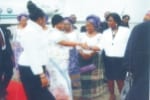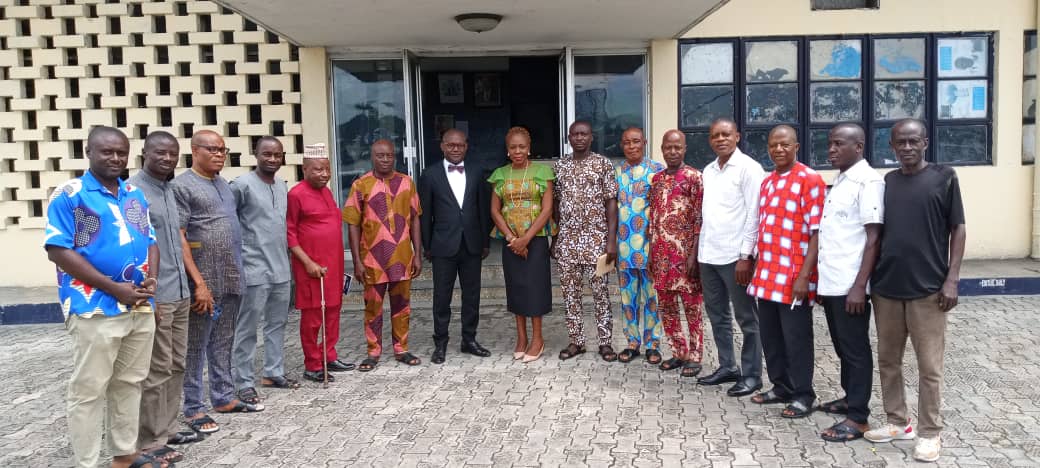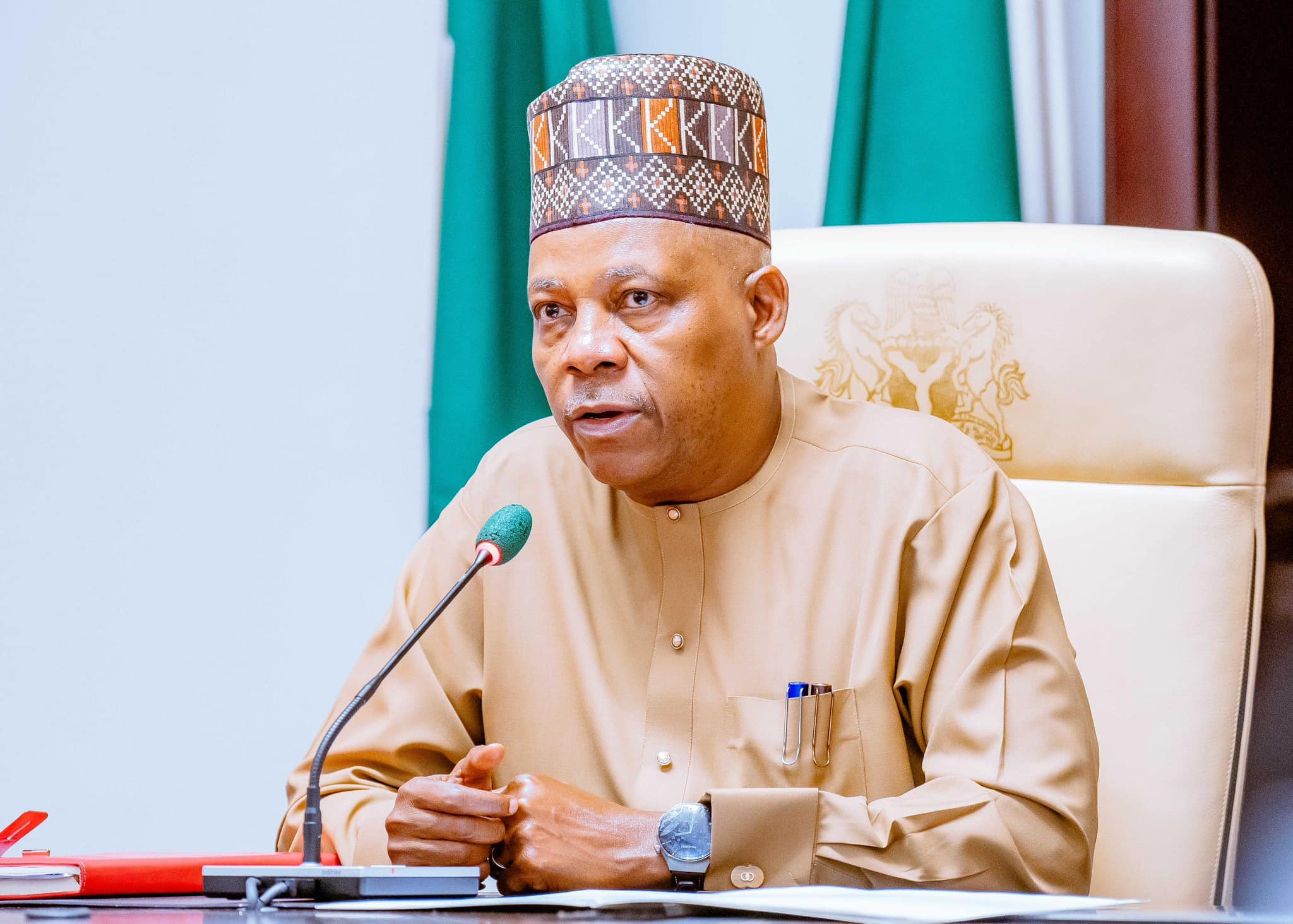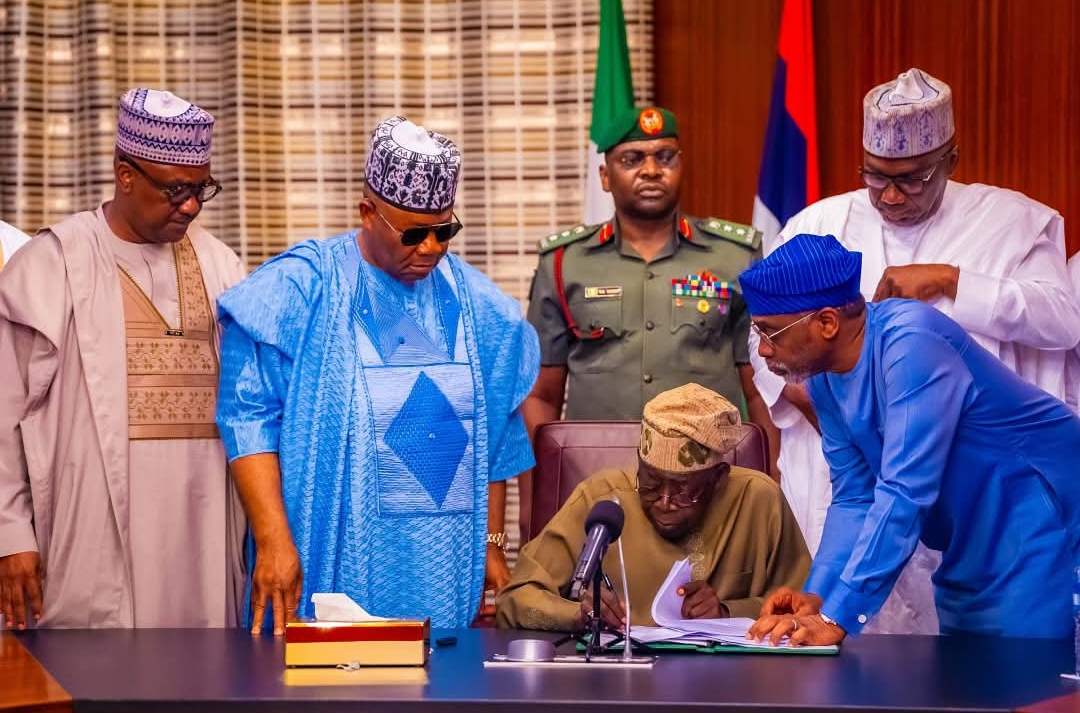Yar’Adua Calls For Peace In N’Delta
President Umru Yar’Adua has advised the Niger Delta region to embrace peace and support development initiatives in the region.
The president also reaffirmed his administration’s readiness to invest in power to eradicate poverty.
President Yar’Adua, who is on an official visit to Bayelsa State, arrived the peace park, venue of the civic reception held for him by his host, Governor Timpre Sylva, in company of the Minister of Solid Minerals, Mrs. Daezani Madueke and Hon. Rotimi Amaechi, Governor of Rivers State.
However, both senators and members of House of Representatives representing the state in the National Assembly were absent. An Abuja source confided that the legislators did not accompany the president because they said they were not invited by the state government. But a top government official denied this saying they were sent letters of invitation.
Yar’Adua, who expressed his administration’s preparedness to transform the Niger Delta, urged those he described as merchants of violence to change their ways.
But to those who genuinely took up arms to draw attention to the sad situation to the region, he said, “we have heard you and we are ready to work with you to move the Niger Delta forward in the interest of its long-suffering people.
“But to those hiding under the cover of legitimate protest to feather private nests, those merchants of violence, I say to you: change your ways, the people of Niger Delta have seen through your antics and will soon expose you”.
He urged all the people to give the administration a chance to earn their trust.
The president expressed hope that soon, “the region will be transformed into a development hub not only for Nigeria but also for the West African sub-region, in a way that will surpass the recent post-conflict transformation of Angola. But this cannot happen without peace and partnership.
“This is why we are strongly committed to prompt payment of all statutory allocations due to the region and to continued support to interventionist agencies like the NDDC. This is also why we created the Ministry of Niger Delta to coordinate our holistic approach to he transformation of this region.”
He, however, noted that all these would come to naught without peace, without trust, and cooperation of stakeholders.
“Let me therefore use this opportunity to state categorically that our amnesty offer to militants is not a ruse. It is for real “he said, and stressed that the administration would continue to put in place every measure that would bring about peace.
He said the complaints of the people of the region have been noted and expressed his determination to work with them to uplift the state and the region.
Speaking on power, he said it would impact on the lives of Bayelsans.
According to him, regular supply of electricity would improve the productive capacities of Bayelsans and deepen opportunities for growth and prosperity.
The administration, according to him, believes power represents a principal pathway out of poverty for Nigerians.
“Clearly, we need to fix electricity as quick as possible”.
“This is why electricity is accorded a priority position under critical infrastructure in our 7-Point Agenda. And this is why we are not wavering in our commitment to generating and distributing 6,000 MW by the end of this year, and 10,000 MW by 2011. There are enormous challenges ahead but the targets will be met”.

Wife of the Vice President, Mrs Dame Patience Jonathan (2nd leftt) in a handshake with some dignataries while wife of Rivers State Governor, Lady Judith Amaechi, watches at the Port Harcourt Airport, recently. Photo: Ike Wigodo.

Niger Delta
RSNC Head Charges NAOMEW On Professionalism, Effective Service Delivery

The Head of Rivers State Newspaper Corporation, Mrs Stella Dornubari Gbaraba, has charged the National Association of Ogoni Media House Workers (NAOMEW) World Wide, to be committed to professionalism, patriotism and effective service delivery in the discharge of their duties and rendering of patriotic gestures.
Mrs Gbaraba gave the charge yesterday when the NAOMEW, The Tide Chapter paid her a courtesy call in her office in Port Harcourt.
She expressed deep appreciation for the visit, and assured the Association of her commitment to being a worthy Ogoni Ambassador like late Mr Augustine Nwikinaka, former General Manager of the corporation, to promote the fortunes of the corporation, while counting on their unflinching encouragement, prayers and support to succeed.
“ I am very happy to receive the National Association of Ogoni Media House Workers (The Tide Chapter) today in my office. I am glad you people came to my office, for those that know me in a short while in the corporation, I am a serious-minded person. I heard that the time the corporation was functioning well was under the leadership of late Austin Nwikinaka. Any where I go to, I will rather come down and show working example and that is what the Ogoni person is known for. So I am always proud to associate myself with an Ogoni man, so your support means so much to me,” Mrs Gbaraba said.
She assured them of running an open-door policy in the management of the corporation, and urged stronger partnership between NAOMEW, other unions, interest groups, corporate organisations, institutions and the Rivers State Newspaper Corporation in professional service delivery.
Speaking on behalf of the NAOMEW, The Tide Chapter, the National Secretary of the association, Comrade Taneh Beemene welcomed her into The Tide family and also congratulated her on her very important appointment.
Taneh, who expressed confidence in her experience and abilities to deliver on her assignments, thanked her for the uncommon feats recorded in the corporation within her brief leadership. He said the corporation has been revived from its comatose status that predated her appointment.
“ Within your short time, you have given the corporation a remarkable facelift. We pray that God should give you the enablement to restore the dignity of the corporation. We have come to inform you that we are solidly behind you and will make our untiring contributions to make you succeed, “ he stated.
In his vote of thanks and closing remarks, the Chairman, National Union of Printing, Publishing and Paper Production Workers (NUPPPPROW), Comrade Keyirale Donatus Nwiueh thanked the Head of the Rivers State Newspaper Corporation, Mrs Stella Dornubari Gbaraba for receiving the association in a warm manner, adding that she should count on the support of the association to succeed.
Kiadum Edookor
News
Shettima In Ethiopia For State Visit

Vice President Kashim Shettima has arrived in Addis Ababa, Ethiopia, for an official State visit at the invitation of the Prime Minister, Dr. Abiy Ahmed.
Upon arrival yesterday, Shettima was received at the airport by the Minister of Foreign Affairs of Ethiopia, Dr. Gedion Timothewos, and other members of the Ethiopian and Nigerian diplomatic corps.
Senior Special Assistant to the Vice President on Media and Communication, Stanley Nkwocha, revealed this in a statement he signed yesterday, titled: “VP Shettima arrives in Ethiopia for official state visit.”
During the visit, Vice President Shettima will participate in the official launch of Ethiopia’s Green Legacy Programme, a flagship environmental initiative.
The programme designed to combat deforestation, enhance biodiversity, and mitigate the adverse effects of climate change targets the planting of 20 billion tree seedlings over a four-year period.
In line with strengthening bilateral ties in agriculture and industrial development, the Vice President will also embark on a strategic tour of key industrial zones and integrated agricultural facilities across selected regions of Ethiopia.
Featured
Tinubu Signs Four Tax Reform Bills Into Law …Says Nigeria Open For Business

President Bola Tinubu yesterday signed into law four tax reform bills aimed at transforming Nigeria’s fiscal and revenue framework.
The four bills include: the Nigeria Tax Bill, the Nigeria Tax Administration Bill, the Nigeria Revenue Service (Establishment) Bill, and the Joint Revenue Board (Establishment) Bill.
They were passed by the National Assembly after months of consultations with various interest groups and stakeholders.
The ceremony took place at the Presidential Villa, yesterday.
The ceremony was witnessed by the leadership of the National Assembly and some legislators, governors, ministers, and aides of the President.
The presidency had earlier stated that the laws would transform tax administration in the country, increase revenue generation, improve the business environment, and give a boost to domestic and foreign investments.
“When the new tax laws become operational, they are expected to significantly transform tax administration in the country, leading to increased revenue generation, improved business environment, and a boost in domestic and foreign investments,” Special Adviser to the President on Media, Bayo Onanuga said on Wednesday.
Before the signing of the four bills, President Tinubu had earlier yesterday, said the tax reform bills will reset Nigeria’s economic trajectory and simplify its complex fiscal landscape.
Announcing the development via his official X handle, yesterday, the President declared, “In a few hours, I will sign four landmark tax reform bills into law, ushering in a bold new era of economic governance in our country.”
Tinubu made a call to investors and citizens alike, saying, “Let the world know that Nigeria is open for business, and this time, everyone has a fair shot.”
He described the bills as not just technical adjustments but a direct intervention to ease burdens on struggling Nigerians.
“These reforms go beyond streamlining tax codes. They deliver the first major, pro-people tax cuts in a generation, targeted relief for low-income earners, small businesses, and families working hard to make ends meet,” Tinubu wrote.
According to the President, “They will unify our fragmented tax system, eliminate wasteful duplications, cut red tape, restore investor confidence, and entrench transparency and coordination at every level.”
He added that the long-standing burden of Nigeria’s tax structure had unfairly weighed down the vulnerable while enabling inefficiency.
The tax reforms, first introduced in October 2024, were part of Tinubu’s post-subsidy-removal recovery plan, aimed at expanding revenue without stifling productivity.
However, the bills faced turbulence at the National Assembly and amongst some state governors who rejected its passing in 2024.
At the NASS, the bills sparked heated debate, particularly around the revenue-sharing structure, which governors from the North opposed.
They warned that a shift toward derivation-based allocations, especially with VAT, could tilt fiscal balance in favour of southern states with stronger consumption bases.
After prolonged dialogue, the VAT rate remained at 7.5 per cent, and a new exemption was introduced to shield minimum wage earners from personal income tax.
By May 2025, the National Assembly passed the harmonised versions with broad support, driven in part by pressure from economic stakeholders and international observers who welcomed the clarity and efficiency the reforms promised.
In his tweet, Tinubu stressed that this is just the beginning of Nigeria’s tax evolution.
“We are laying the foundation for a tax regime that is fair, transparent, and fit for a modern, ambitious Nigeria.
“A tax regime that rewards enterprise, protects the vulnerable, and mobilises revenue without punishing productivity,” he stated.
He further acknowledged the contributions of the Presidential Fiscal Policy and Tax Reform Committee, the National Assembly, and Nigeria’s subnational governments.
The President added, “We are not just signing tax bills but rewriting the social contract.
“We are not there yet, but we are firmly on the road.”
